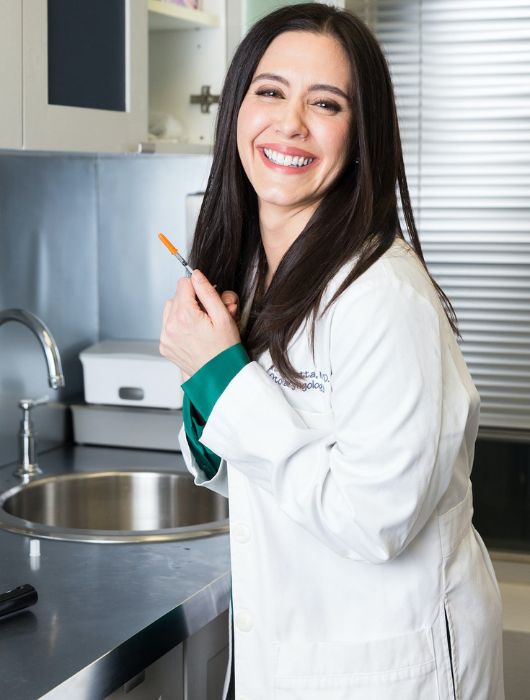Plastic Surgeon Dr. Dara Liotta On “Tweak-ments,” Millennial Patients, And Why the Operating Room Is Her “Zen Place”
Thespotlyte | July 31, 23
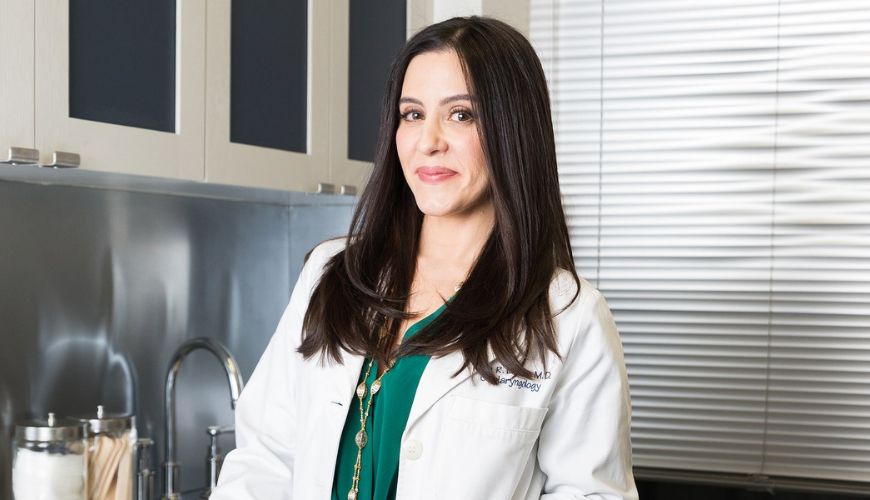
I thought she was French.
It was how I’d heard her name pronounced by a widely beloved French publicist: “Dah-rah Lee-oh-tah,” with a guttural “R” in Dara. The fact that I was meeting her at a posh restaurant downtown only added to the Frenchy feeling; a number of editors were gathered to hear her speak on the latest aesthetics trends.
She was gorgeous, but in a surprisingly girl-next-door way: shiny, dark hair, light makeup with glowing cheeks, huge smile. She didn’t look at all intimidating, as you might expect a high-powered French plastic surgeon to look.
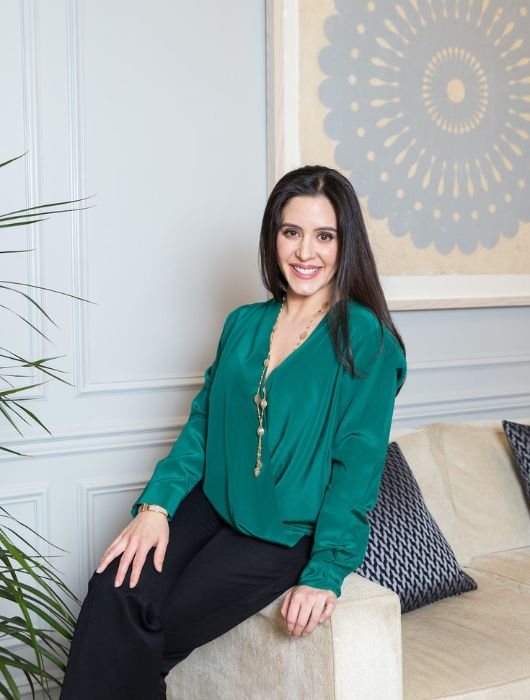
And then she spoke, throwing out bon mots like, “I like my patients to look genetically — not medically — blessed,” and “consider ‘tweak-ments over treatments.” I strained to hear the classic French cadence in her accent. It wasn’t there. Turns out that Dr. Dara Liotta is not from the Île-de-France, but the Île-de-Long — Long Island, baby. She grew up around accents that “had s’s and r’s where they don’t belong.” Her own Long Island accent “got flushed out in college,” she says. And her heritage? “Very Sicilian Italian.” Hence, Liotta.
The next time we met was in her Upper East Side office: She was so friendly and funny, and skilled with a needle — she injected wrinkle reducer between my brows, across my forehead, and in my crow’s feet. (A few weeks later, my mom pointed to my face and said, “I like what’s going on here.” Me too, mom.) I would have loved to have spent the whole day with Dr. Liotta laughing and smoothing, but she’s a bit too busy for that. Between her aesthetics and plastic surgery patients — she has an operating theater right in her office — the double board-certified, Columbia-trained facial plastic surgeon and mother of two sees about 20 patients a day. She powers through with a smile, Cole Haan flats, and a sense of the bigger picture. Keep reading to learn more about her.
[Editor’s note: Injectable wrinkle reducers are used to temporarily smooth the look of moderate to severe wrinkles in certain areas of the face such as the forehead, frown lines, and crow’s feet. They should not be used more frequently than every three months. Like any medical treatment, they have potential risks and side effects. Be sure to talk to a licensed provider to see if they’re right for you. Have more questions? Chat with our team of trained aesthetics specialists now.]
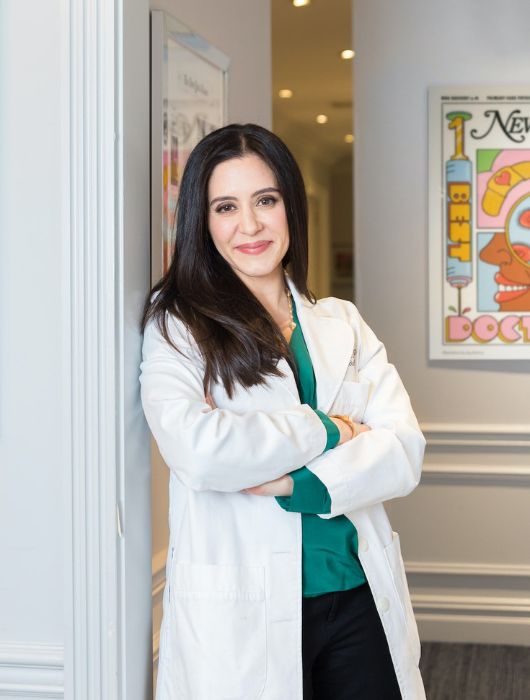
She Thought She’d Grow Up To Be An Artist.
I don’t have any doctors in my family, so I didn’t have that thing where I was like, ‘Oh, yeah, I’m going to be a doctor just like so-and-so.’ I was always making things and drawing, so I thought I’d do something artsy. But then when I went to college, I started volunteering at a hospital and realized that medicine was the right place for me.”
And Really, She Did Become An Artist.
“My Zen place is the operating room. That’s my favorite day, when I can operate all day and just be inside of my head. My husband jokes that I’m super-cranky if I’m away from the O.R. too long. It’s literally like my art project day.”
She’s A Nose Pro . . . With A Broken Nose.
“Patients will say to me a lot, ‘I like your nose.’ But if you look, there’s almost a slope, and then there’s a bump: I took a baseball to the face as a child. I love it as a discretion tool for rhinoplasties, because I can point out, ‘Look, mine’s not perfect, but we’re our own worst critics. No one’s looking at every bump on your face.’ Also, I’d want to do my own nose, and I can’t do that.”
She Gets Injections Herself.
“I do injectable wrinkle reducers. I [get injected] between my eyebrows and on my forehead, but leave the area around my eyes alone, just to have a little something. I like [to add volume to] my cheeks, so I use filler. ”
[Editor’s note: Injectable filler is a temporary treatment that adds volume to areas of the face such as the lips, cheeks, and laugh lines. Like any medical treatment, it has potential risks and side effects. Be sure to talk to a licensed provider to see if it’s right for you. Have more questions? Chat with our team of trained aesthetics specialists now.]
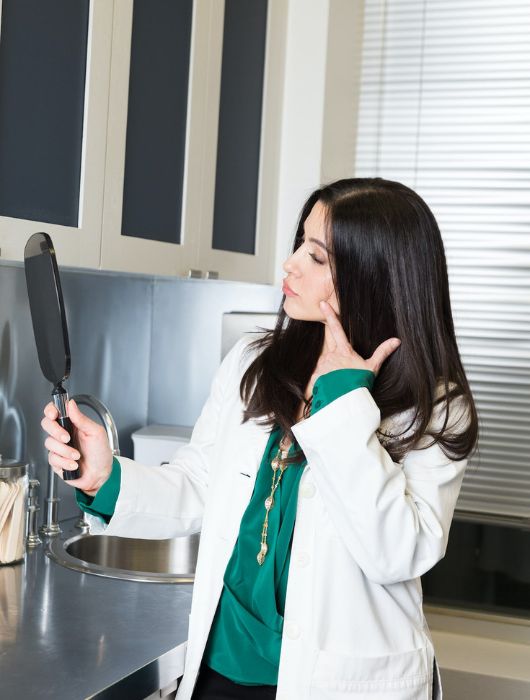
And She Sees A Lot Of New Moms.
“Right after I had my son, I remember I was making silly faces at him and I caught my reflection in the mirror….That was the first time I got an injectable wrinkle reducer [treatment].
At the end of pregnancy, you’re retaining tons of water: You’re bloated, you’re puffy, your blood volume is [higher than] normal. And then after you have the baby, you shed that fluid the mid-face area [can look deflated]. So for new moms, I like to treat the eye and cheek area: injectable wrinkle reducer between the brows, filler in the cheek.”
[Editor’s note: Women who are pregnant or nursing should not get injectables. Please consult with your doctor.]
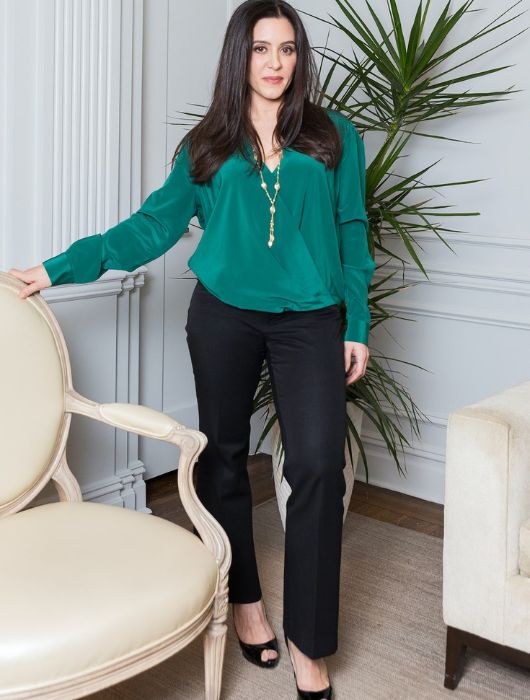
She Loves The Difficult Patients.
“I love patients who staff or other people would say are difficult. My favorite patients are those who are kind of obsessive and have a million questions. It’s not like they’re argumentative, it’s just that they enjoy the dynamic of it. And they’re the best patients, because they listen to everything you say. They’re super happy when you just give them all the details. Maybe that’s because I’m a little obsessive myself. My medical assistant knows: never throw anything out until the patient has left the building. I will literally keep examining and touching your face until you’re out of the building.”
She’s Big In Dubai.
“Dubai Instagrammer Malak Alhusaini found me because I did injections on her friend. She started posting about my work and the demand grew, so now I visit Dubai five times a year for about a week per trip. I do a lot of noses there, but it’s a very different aesthetic. In New York, people want a straight nose. In Dubai, the high society Emirati have an elongated nose, so that’s what’s in demand. We do a lot of imaging there beforehand to figure out what the patient’s goal is.”
She’s Also Big In Ecuador And Guatemala (But For Very Different Reasons).
“When I was in residency, I had a pediatric ENT attending who was a mentor to me: He really had the life-surgery-doctor balance. He was very involved in Medical Missions for Children℠, which provides facial reconstruction surgeries for underserved populations, and I went on a trip when I was a resident with him. Then, after having my own children, I thought, ‘Wow, I have two healthy kids, it’s time to do more of this.’
So since then, I’ve been going on two trips a year, to Quito, Ecuador, and Antigua, Guatemala. There’s a team of three or four surgeons from all across the country. We bring our own anesthesiologists, nurses, and pediatricians, and we hold a huge clinic the first day where we might screen hundreds of kids that have traveled for days to get there. Then we do, like, a hundred surgeries in five days: cleft lips, cleft palates, cleft rhinoplasty reconstructions.”
She Says That Selfies Have Changed Her Practice.
“The way that millennials approach injectables and plastic surgery is way different than older generations, because they know what they look like at every angle. They come in with a lot more knowledge and opinions about their own faces. The new trend is for people not to want to look like someone else: They’re not bringing in pictures of celebrities; they’re bringing a picture of themselves. They don’t ask me what I think they should do; they tell me what they want to do, which I think is a much more empowered way to be.”
